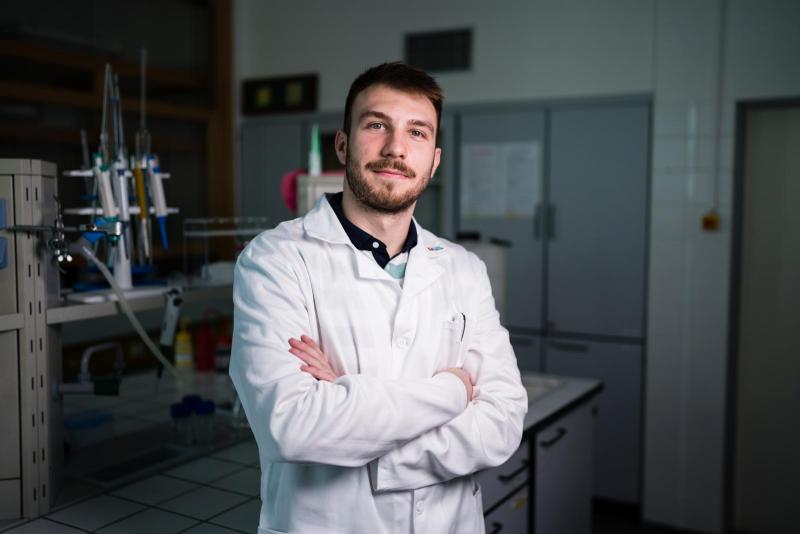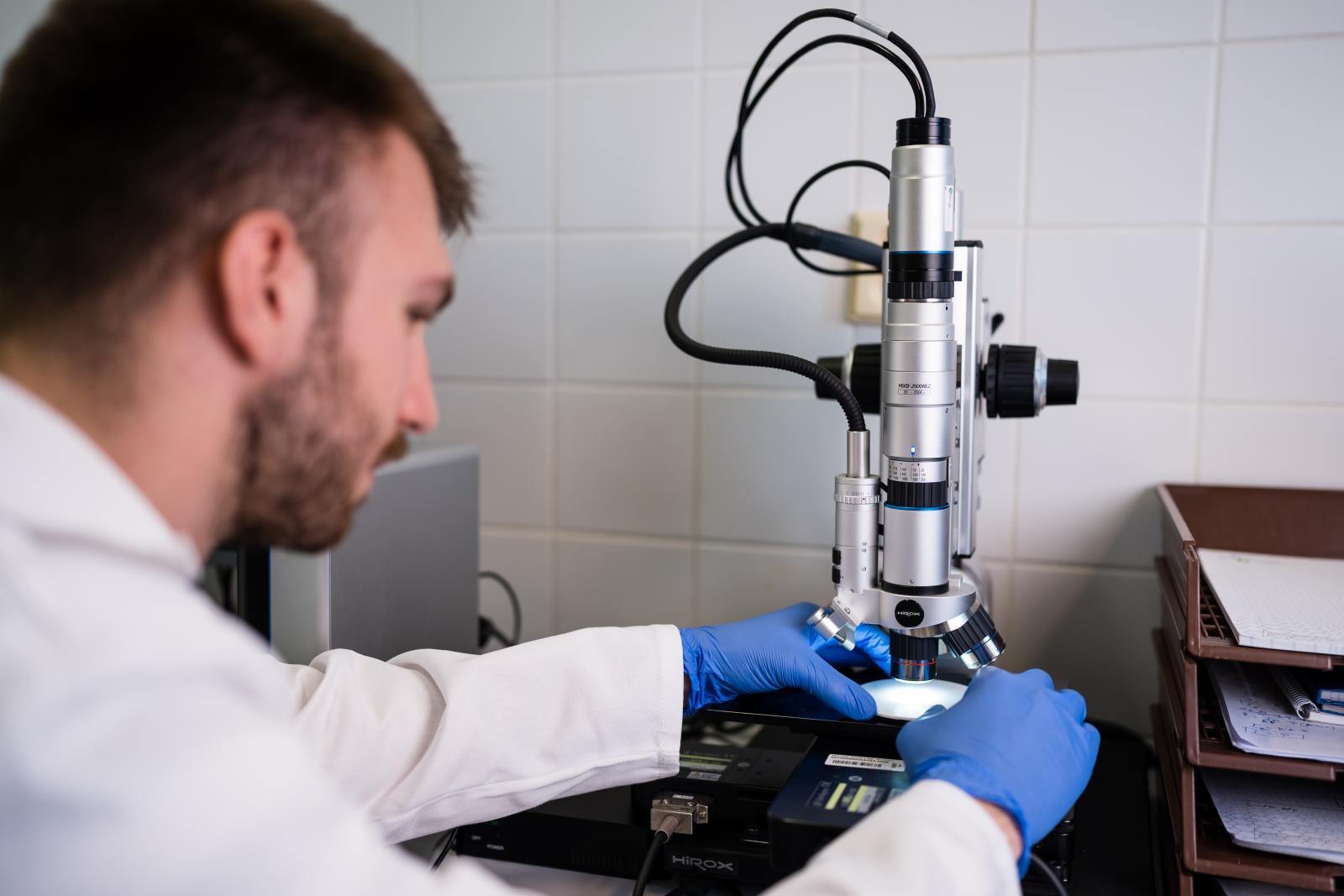Ideas and discoveries
Stevan Gavranović studies environmentally friendly lead-free halide perovskites

A doctoral student Stevan Gavranović from the Faculty of Chemistry at the BUT is working on halide perovskites. Specifically, his project, for which he also received a scholarship within the Brno Ph.D. Talent, deals with ecological lead-free perovskite crystals, their possibilities and photosensitivity capability. Gavranović sees great potential in perovskites in general due to their high chemical variability and low production costs.
In the future, halide perovskites could be used to produce photodiodes or photo detectors of the photoconductor type. “Which are crystalline materials, inorganic or hybrid,” says doctoral student Stevan Gavranović from the Faculty of Chemistry at the BUT. The Materials Research Centre has been working on perovskites for a long time. “They have been very popular in optoelectronics for the last ten years. They allow the conversion of electromagnetic radiation into electrical energy and have amazing properties compared to traditionally used materials,” adds Gavranović.
In particular, for example, it is a high absorption coefficient and high mobility of the charge carriers. “Moreover, the preparation is much cheaper compared to silicon, which is used everywhere today. However, its preparation is very demanding in terms of energy. Perovskites offer similar properties at a fraction of the price,” points out Stevan Gavranović, adding that they also boast great chemical variability. “Just by changing the precursor, the physical properties of the material can be changed. For example, the width of the forbidden band, which is a critical parameter in semiconductors. This is a unique property that few materials have,” he explains.

He himself was introduced to perovskites in 2018. Since then he has been working on these materials, but until now he has only been working on the common halide perovskites, which contain lead. “And lead, as we know, is a toxic element. This means that it has an adverse effect on people and the environment, which we do not want. Our generation cannot afford to prepare materials that will have a negative impact in the future. We already have plenty of other existing materials that we need to get rid of to clean up the planet,” says Gavranović.
His project, for which he also received a scholarship within the Brno Ph.D. Talent, is therefore dedicated to lead-free crystals. Stevan Gavranović will try to replace the lead with another element that would not lead to a breach in the structure. “This means that it will retain the perovskite structure and properties while being environmentally acceptable. Bismuth, for example, seems to be a good substitute,” Gavranović adds.
But he admits that perovskites have their negatives. These include, for example, instability. “Solar cells made of silicon have the same efficiency for, say, thirty years. In contrast, perovskites are relatively unstable. That is why companies that are starting to work with perovskites are combining them to produce, for example, tandem solar cells. However, it is the lead content and its toxicity that seems to be holding back any major boom,” Gavranović thinks.

That is why his work has great potential. In fact, current research is predominately focused on lead perovskites. “There are already studies, and I'm certainly not saying we are the first in the world to address the topic. But if we could find the right combination of elements and replace lead, we would be the first in the world,” he points out.
Gavranović and his team are already beginning to synthesize these crystals as part of their research. In addition, he himself is going on an internship in Spain. “There is a top workplace there, where they are also working on lead-free perovskites,” he explains, adding that he hopes to gain further knowledge during his internship that will help him bring the project to a successful conclusion. Even the current team at the Faculty of Chemistry of the BUT has a very high level, according to him. “We have a very good team. We deal with synthesis and evaluation of a wide range of parameters. We synthesize something and change the parameters as desired. This is work that combines physics and chemistry. My two loves,” he says in conclusion.
(zeh)
Bone tissue carriers from 3D printer make bone regeneration more effective. Their formulations are being tested at FCH BUT
In high school, she devoted herself to making cosmetics. She has now come second in the business competition and she is preparing new products
Challenge as a lifestyle: strojLAB connects students and fields of study across BUT
Erasmus opened doors for me around world. Thanks to it, I gained excellent publications and friends, says Pavel Šiler from FCH BUT
Nilmore's circular clothing allows you to use the fibre repeatedly